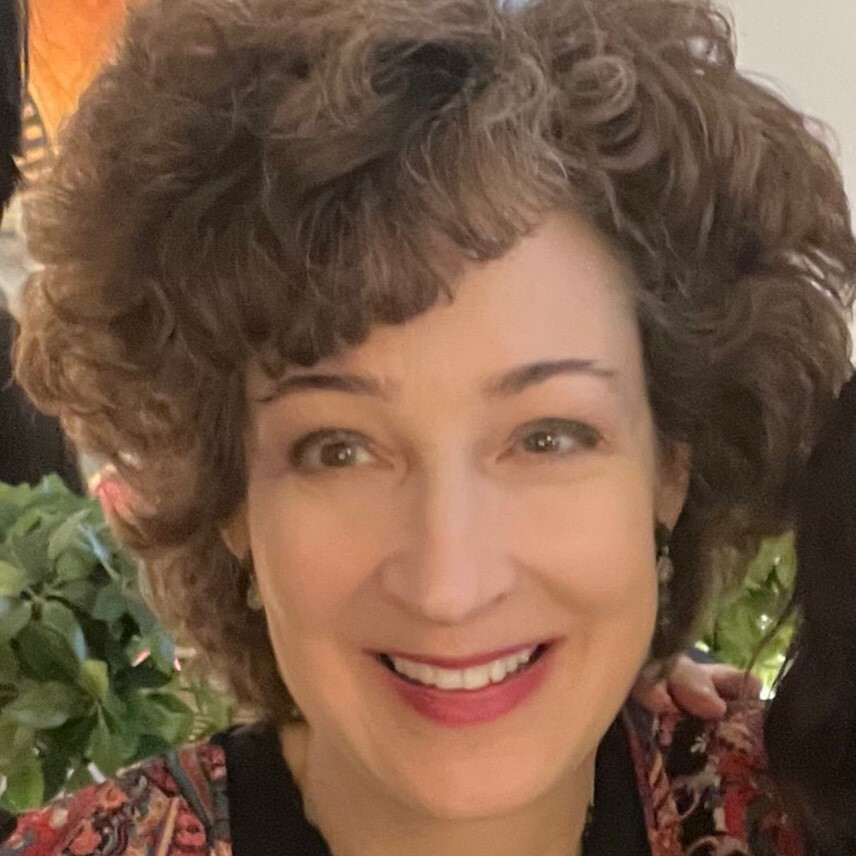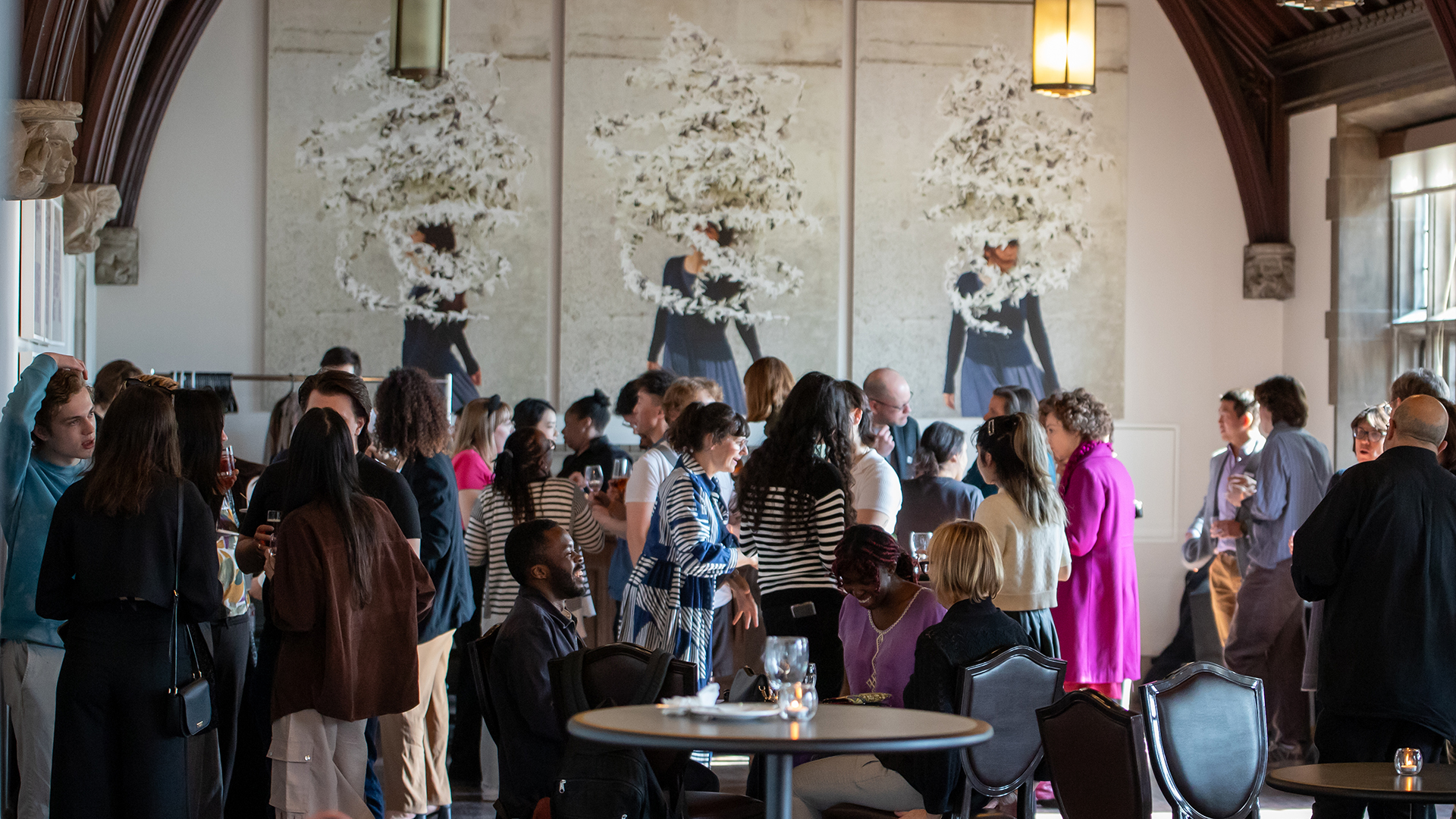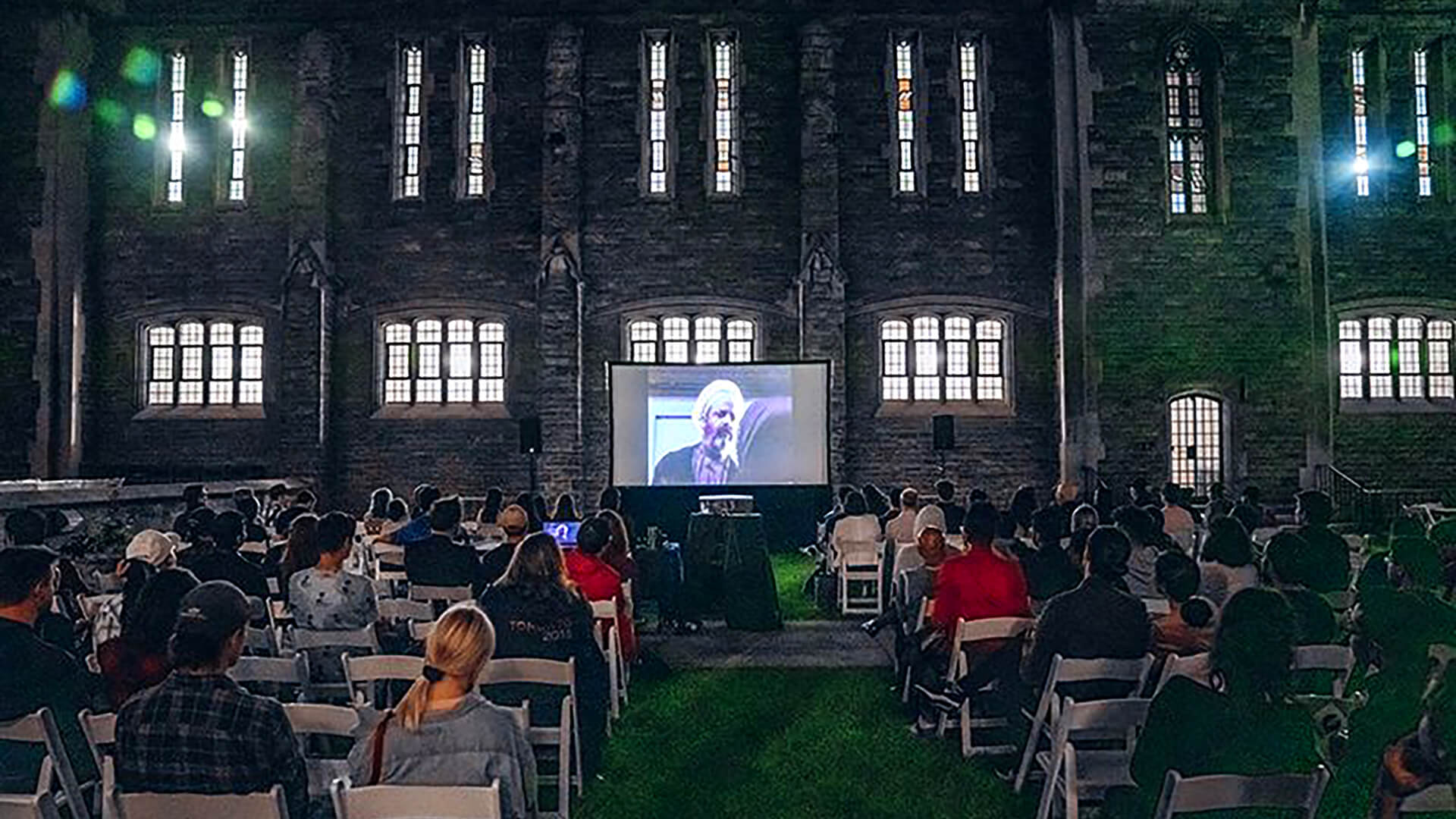Acclaimed Indigenous artist Don Russell spent time at the Hart House Farm with the goal of creating an interactive, participatory work that encompasses and embodies a depth of Indigenous wisdom and knowledge. Past-Present-Future recognizes the link between First Nations and the history of this land, and builds community.
For four days this autumn, from October 12 to 15, Hart House Farm’s inaugural Artist in Residence joined with Indigenous and non-Indigenous students and members of the University of Toronto community, elders and knowledge keepers to consider, share, learn and produce. Past-Present-Future was an interactive participatory project that called on people to come together to create land-based artwork.

Don Russell, a highly respected multidisciplinary artist of Acadian and Mi’kmaq heritage, was bestowed the residency that was built around a one-of-a-kind experience connecting with and discovering the land; visiting with Indigenous elders, artists and individuals who hold much knowledge about plants; listening to their stories; and reflecting on the land.
“The Hart House Farm is a very special place,” Don says reflecting on the four-day event, having first visited the Farm in summertime, 2023, when the mosquitoes were at their height. The land around the Farm made an impression on him. He was pleased to discover the rich diversity of landscape and topography the Farm offers – the pond, caves, fields and wooded areas.
The theme of this residency was Indigenous teachings about the concept of time and how we utilize that understanding to keep our lives in balance. And what better place to do so? Hart House Farm sits on the edge of the escarpment and boasts mature forests, meadows and limestone cliffs. In mid-October, the fall colours were spectacular.

The Process of Discovery is Integral to Don’s Work
Originally from Newfoundland, Don completed his BA with a specialization in fine arts at the University of Guelph (1995). His work is represented in collections across Canada, notably among them is U of T’s Faculty of Law and Rideau Hall, the Governor General of Canada’s residence.
Don’s artistic practice encompasses encaustic painting, printmaking and land art where he utilizes key elements of stone and earth to create monumental installations.

“My work finds and reclaims historical Indigenous sites and objects, recognizes the link between First Nations and the history of this land, and testifies as to the presence of Indigenous people and their descendants who are still here and very much alive,” he says, adding, “My land-based art serves as a gathering place for community members, a place to reflect on the history of Indigenous peoples within the region.”
The aesthetic and ceremonial creation at the Hart House Farm was very much in line with Don’s growing body of work, in particular “Stone Clay and Fire - Making a Circle,” Contemporary Art Forum Kitchener + Area (CAFKA) 2018. This was a collaborative land-based piece, created in a natural setting. It eventually decomposed and went back into the earth, which seemed right, Don notes.
When experiencing Don’s work, one can easily see that it’s more about collaborating, community building and connecting to nature, at a certain point in time, than it is about creating one, everlasting or static piece of art. His work is rooted in the process of discovery, engaging with surroundings and finding meaning.
Four Days Highlighted by Knowledge Sharing and Collaboration
In keeping with this, at the very start of the four days, Don sought input, ideas and reflections from participants on where to create the new piece. Options were a wooded area, which could be exquisite, or on an open field.
Indigenous elders, knowledge keepers, artists and plant experts who visited the Hart House Farm and participated in the event over the four days greatly enriched the project. These individuals were people who Don had known and worked with for years.
The agenda was full: On Day One, the project launched with a sacred fire. Participants then settled into their accommodations at the Farm, which included the main building (Ignatieff House), bunkies and tents; met with Don; and learned more about the project. They enjoyed a workshop on edible and medicinal plant identification and uses by farmer and herbalist Julia Hitchcock that afternoon.

The creation of the communal art project began in earnest on Day Two. That afternoon, interdisciplinary artist Lisa Hirmer hosted a Forest Notes Workshop. Participants then continued the creation of the communal art project on Day Three. Elder, writer and artist Peter Schuler of the Mississaugas of the Credit and a member of the Minweyweygaan Midewin Lodge in Manitoba put forward some teachings that morning. Knowledge Keeper Lois Thomas, first-generation “off reservation” child to traditional Onondaga and Oneida parents, gave a talk in the afternoon.
The group completed the communal art project on Day Four, a day that also included a celebratory feast.
Artwork Represents Different Aspect of Time
The land-based artwork that Don created with the group, “Past-Present-Future,” is comprised of circular formations, short walls, built from local stones that the artist thoughtfully compiled so as to fill every hole and fortify the overall structure.
The piece begins on a slightly higher part of the land and then tapers down, Don notes, which creates a sense of movement and motion, which is enhanced by the circular pattern. There are three spokes to the piece, each representing a different aspect of time: past, present and future.

Past-Present-Future Will Resonate Beyond a Few Days in October
This was much more than a four-day venture. It will resonate beyond a few days in October. “It could help Hart House, and U of T, build lasting meaningful relationships with the Indigenous community, artists, elders and knowledge keepers,” Don says while emphasizing, “but this kind of community building takes time, thoughtfulness and continuous dedication.”
He is hopeful. He believes that this work at the Hart House Farm was “a good start.” He greatly enjoyed working with Saša Rajšić (coordinator, Integrated Arts Education) and Day Milman (manager, Integrated Arts Education), who participated in the four-day event.
Read more about Past-Present-Future.





